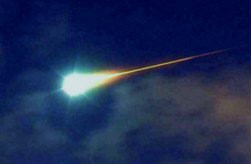






Looking After Your Finds - Reference




Identifying Minerals


Powered By Sispro1

[1-3]
Identifying Minerals
Pages 1-3
Identifying Minerals
Before you identify rocks, you have to be able to identify the minerals that make them up. Here's a strategy to follow. These are guidelines designed to get you to the most likely identifications fastest. Bear in mind that exceptions are possible.
First Principle: Suspect the most likely mineral first. There's a saying among medical students that applies here, too: "When you see hoof prints, think horses, not zebras." Doctors could waste a huge amount of time and money if they tested for every rare disease that might produce a given set of symptoms, but almost always the more common explanation is correct. The same is true of identifying rocks and minerals.
Metallic Luster
Suspect a sulfide first, especially if you can detect a sulfur smell. Next most likely, an oxide, then perhaps a metallic element or compound of one of the semi-metals (As, Se, Bi, Te). Non-metallic luster could indicate any other group. However, some of the sulfide minerals are non-metallic, notably sphalerite, orpiment, realgar and cinnabar. The last three are identified by their bright colours.
Not many minerals can appear either metallic or non-metallic. Hematite and sphalerite are the most common. Muscovite mica can appear silvery.
High Density
Suspect a sulfide first, especially if you can detect a sulfur smell. Next most likely, an oxide, then perhaps an element or compound of one of the semi-metals (As, Se, Bi, Te). Note that this property pretty much goes along with metallic luster. Few non-metallic minerals have high density; barite and sphalerite are the most common. Light coloured dense minerals are most likely barium or lead minerals.
Hardness
If a mineral can scratch glass and is non-metallic, suspect a silicate first, then perhaps one of the hard oxide minerals like corundum or rutile. Always suspect quartz first, then a feldspar. If it's metallic in luster, suspect an oxide. Very soft non-metallic minerals that can be scratched easily with a knife are most likely to be carbonates, halides or sulfates.
Cleavage
Cubic or octahedral, soft, non-metallic: suspect a halide
Cubic and metallic: suspect a sulfide
Rhombohedral: suspect a carbonate. Check with acid test
Other soft mineral with good cleavage: suspect a sulfate
Thin sheets: suspect a mica
Hard splintery mineral: suspect a chain silicate
Hard, with good blocky cleavage: suspect a feldspar
Colour
Colour is far down the list because it is easily the least reliable characteristic of minerals. Colour can always be due to an impurity or surface stain. As an undergraduate, I was once asked to try to identify a hard bright blue mineral. I even had X-ray data to help. After running through all the copper minerals with no luck, I looked at the X-ray data for all minerals and found a perfect match with diopside. We had a common pyroxene mineral that is normally white, but in this case was stained by copper. So always suspect that colour may be due to impurities.
Bright blue to green: suspect a copper mineral. Dull greens are usually not copper greens, nor are blues that have a violet cast.
Earth tones are almost always due to iron, either as a principal ingredient or as an impurity or surface coating.
Bright yellow, orange or red: suspect one of the non-metallic sulfides, then one of the transition metal radicals (chromate, vanadate,
etc.). A few oxides are also brightly coloured. Some uranium minerals are bright yellow or yellow-green.
Pink: if hard, suspect potassium feldspar. The common manganese minerals rhodonite (silicate) and rhodochrosite (carbonate) are
also pink, and manganese can stain other minerals pink as well. Some lithium silicates are also pink or lavender.
Black or dark green: if hard, suspect a ferromagnesian silicate
Pea green, especially in granite or a metamorphic rock: epidote. Almost always.
Dark green mineral in sandstone: glauconite
Light blue mineral in carbonate rocks: celestite
Light blue mineral with long crystals in metamorphic rocks: kyanite
Geologic Setting
Sedimentary rocks
Common minerals: calcite, dolomite, gypsum, glauconite, celestite, barite, fluorite
Arid or well-protected settings: halides and sulfates, also be alert for borates, nitrates in extremely dry settings
Igneous rocks
Quartz never occurs with olivine, nepheline, leucite, melilite or corundum
Common minerals: Quartz, feldspars, pyroxenes, amphiboles, olivine, micas.
Granitic rocks may include epidote, tourmaline, beryl, apatite, topaz, zircon, and sphene
o A pea-green mineral in granitic rocks is almost always epidote.
o An intensely black mineral, especially with elongated crystals, is most likely tourmaline. A rounded triangular cross-section
clinches it. Tourmaline is far deeper black than biotite, pyroxene, or amphibole.
In pegmatites, you may find lithium and rare-earth minerals.
Mafic rocks may contain calcic plagioclase, pyroxenes, amphiboles, olivine, nepheline, leucite, corundum, magnetite, spinel, or Metamorphic Rocks
May include any minerals found in the parent rocks
Distinctive metamorphic minerals include:
o Low temperature: chlorite, talc, chloritoid
o Low pressures: andalusite, cordierite
o Medium temperatures: actinolite, tremolite, epidote, diopside, anthophyllite, cummingtonite
o High temperatures: staurolite, garnet, kyanite, sillimanite, wollastonite, forsterite, periclase, graphite.
o High pressures: glaucophane, jadeite, lawsonite zeolites
Before you identify rocks, you have to be able to identify the minerals that make them up. Here's a strategy to follow. These are guidelines designed to get you to the most likely identifications fastest. Bear in mind that exceptions are possible.
First Principle: Suspect the most likely mineral first. There's a saying among medical students that applies here, too: "When you see hoof prints, think horses, not zebras." Doctors could waste a huge amount of time and money if they tested for every rare disease that might produce a given set of symptoms, but almost always the more common explanation is correct. The same is true of identifying rocks and minerals.
Metallic Luster
Suspect a sulfide first, especially if you can detect a sulfur smell. Next most likely, an oxide, then perhaps a metallic element or compound of one of the semi-metals (As, Se, Bi, Te). Non-metallic luster could indicate any other group. However, some of the sulfide minerals are non-metallic, notably sphalerite, orpiment, realgar and cinnabar. The last three are identified by their bright colours.
Not many minerals can appear either metallic or non-metallic. Hematite and sphalerite are the most common. Muscovite mica can appear silvery.
High Density
Suspect a sulfide first, especially if you can detect a sulfur smell. Next most likely, an oxide, then perhaps an element or compound of one of the semi-metals (As, Se, Bi, Te). Note that this property pretty much goes along with metallic luster. Few non-metallic minerals have high density; barite and sphalerite are the most common. Light coloured dense minerals are most likely barium or lead minerals.
Hardness
If a mineral can scratch glass and is non-metallic, suspect a silicate first, then perhaps one of the hard oxide minerals like corundum or rutile. Always suspect quartz first, then a feldspar. If it's metallic in luster, suspect an oxide. Very soft non-metallic minerals that can be scratched easily with a knife are most likely to be carbonates, halides or sulfates.
Cleavage
Cubic or octahedral, soft, non-metallic: suspect a halide
Cubic and metallic: suspect a sulfide
Rhombohedral: suspect a carbonate. Check with acid test
Other soft mineral with good cleavage: suspect a sulfate
Thin sheets: suspect a mica
Hard splintery mineral: suspect a chain silicate
Hard, with good blocky cleavage: suspect a feldspar
Colour
Colour is far down the list because it is easily the least reliable characteristic of minerals. Colour can always be due to an impurity or surface stain. As an undergraduate, I was once asked to try to identify a hard bright blue mineral. I even had X-ray data to help. After running through all the copper minerals with no luck, I looked at the X-ray data for all minerals and found a perfect match with diopside. We had a common pyroxene mineral that is normally white, but in this case was stained by copper. So always suspect that colour may be due to impurities.
Bright blue to green: suspect a copper mineral. Dull greens are usually not copper greens, nor are blues that have a violet cast.
Earth tones are almost always due to iron, either as a principal ingredient or as an impurity or surface coating.
Bright yellow, orange or red: suspect one of the non-metallic sulfides, then one of the transition metal radicals (chromate, vanadate,
etc.). A few oxides are also brightly coloured. Some uranium minerals are bright yellow or yellow-green.
Pink: if hard, suspect potassium feldspar. The common manganese minerals rhodonite (silicate) and rhodochrosite (carbonate) are
also pink, and manganese can stain other minerals pink as well. Some lithium silicates are also pink or lavender.
Black or dark green: if hard, suspect a ferromagnesian silicate
Pea green, especially in granite or a metamorphic rock: epidote. Almost always.
Dark green mineral in sandstone: glauconite
Light blue mineral in carbonate rocks: celestite
Light blue mineral with long crystals in metamorphic rocks: kyanite
Geologic Setting
Sedimentary rocks
Common minerals: calcite, dolomite, gypsum, glauconite, celestite, barite, fluorite
Arid or well-protected settings: halides and sulfates, also be alert for borates, nitrates in extremely dry settings
Igneous rocks
Quartz never occurs with olivine, nepheline, leucite, melilite or corundum
Common minerals: Quartz, feldspars, pyroxenes, amphiboles, olivine, micas.
Granitic rocks may include epidote, tourmaline, beryl, apatite, topaz, zircon, and sphene
o A pea-green mineral in granitic rocks is almost always epidote.
o An intensely black mineral, especially with elongated crystals, is most likely tourmaline. A rounded triangular cross-section
clinches it. Tourmaline is far deeper black than biotite, pyroxene, or amphibole.
In pegmatites, you may find lithium and rare-earth minerals.
Mafic rocks may contain calcic plagioclase, pyroxenes, amphiboles, olivine, nepheline, leucite, corundum, magnetite, spinel, or Metamorphic Rocks
May include any minerals found in the parent rocks
Distinctive metamorphic minerals include:
o Low temperature: chlorite, talc, chloritoid
o Low pressures: andalusite, cordierite
o Medium temperatures: actinolite, tremolite, epidote, diopside, anthophyllite, cummingtonite
o High temperatures: staurolite, garnet, kyanite, sillimanite, wollastonite, forsterite, periclase, graphite.
o High pressures: glaucophane, jadeite, lawsonite zeolites
Metallurgy Menu
Copyright All Rights Reserved by Nigel G Wilcox E-Mail: ngwilcox100@gmail.com
Group Pages
Minerals
Complimentary Topics
Designed by Nigel G Wilcox


The Paragon Of Metal Detecting
& Archaeology
& Archaeology
Who Own's the World's Gold?
Pages
Member NCMD
Reference Menu






















